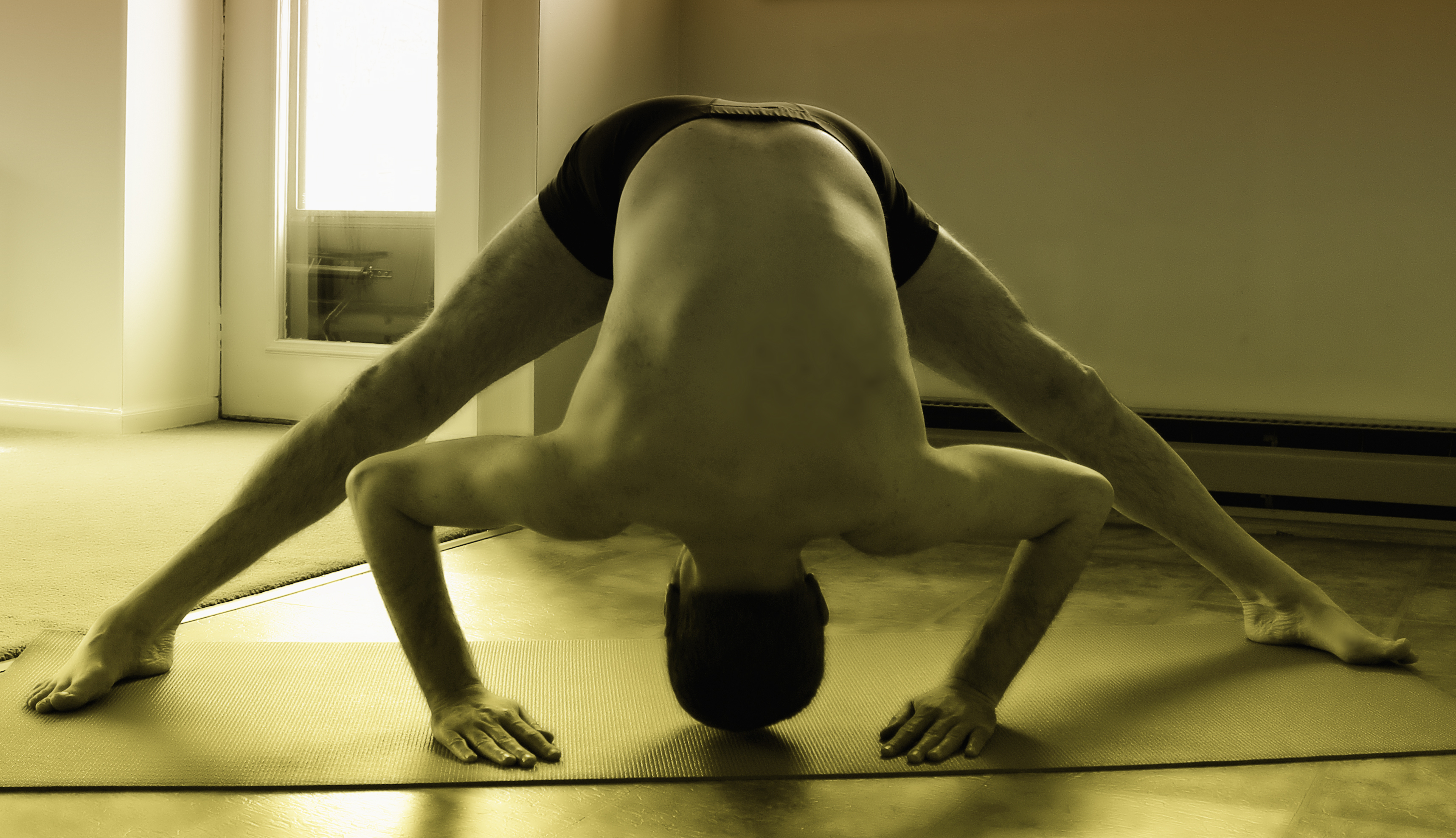Prasarita Padottanasana on:
[Wikipedia]
[Google]
[Amazon]
 Prasarita Padottanasana (Sanskrit: प्रसारित पादोत्तानासन, IAST: Prasārita Pādottānāsana) or Wide Stance Forward Bend is a
Prasarita Padottanasana (Sanskrit: प्रसारित पादोत्तानासन, IAST: Prasārita Pādottānāsana) or Wide Stance Forward Bend is a
 The rotated variant of the pose is Parivritta Prasarita Padottanasana. The position of the legs is unchanged, but the body is rotated so that one hand is on the floor, while the other arm, directly above that hand, is pointing straight upwards; the gaze is directed to the side or upwards. A
The rotated variant of the pose is Parivritta Prasarita Padottanasana. The position of the legs is unchanged, but the body is rotated so that one hand is on the floor, while the other arm, directly above that hand, is pointing straight upwards; the gaze is directed to the side or upwards. A
 Prasarita Padottanasana (Sanskrit: प्रसारित पादोत्तानासन, IAST: Prasārita Pādottānāsana) or Wide Stance Forward Bend is a
Prasarita Padottanasana (Sanskrit: प्रसारित पादोत्तानासन, IAST: Prasārita Pādottānāsana) or Wide Stance Forward Bend is a standing
Standing, also referred to as orthostasis, is a position in which the body is held in an ''erect'' ("orthostatic") position and supported only by the feet. Although seemingly static, the body rocks slightly back and forth from the ankle in the s ...
forward bend asana in modern yoga as exercise
Yoga as exercise is a physical activity consisting mainly of postures, often connected by flowing sequences, sometimes accompanied by breathing exercises, and frequently ending with relaxation lying down or meditation. Yoga in this form has ...
.
Etymology and origins
The name comes from the Sanskrit ''Prasārita'' (प्रसारित) meaning "spread out", ''Pada'' (पाद) meaning "foot", ''Uttan'' (उत्तान) meaning "extended", and ''Asana'' (आसन) meaning "posture" or "seat". The pose is not found in medieval hatha yoga texts. It is described in the 20th century by Krishnamacharya in Yoga Makaranda and Yogasanagalu, and also by his to pupils, Pattabhi Jois in his Ashtanga Vinyasa Yoga, and B. K. S. Iyengar in his '' Light on Yoga''.Description
This is a standing pose with the feet wide apart and the body folded forward and down until in the completed pose the head touches the ground and the hands are placed flat on the ground, the tips of the fingers in line with the heels, the arms bent at right angles. In Ashtanga vinyasa yoga, four variant forms of the asana, which is considered fundamental to that style of yoga, are identified. A pair ofyoga block
A yoga brick or yoga block is a smooth block of wood or of firm but comfortable material, such as hard foam rubber or cork, used as a prop in yoga as exercise.
The use of wooden bricks to assist in alignment was introduced by B. K. S. Iyengar, ...
s may be placed under the hands to allow those with tight hamstrings to execute the pose without strain.
Variations
 The rotated variant of the pose is Parivritta Prasarita Padottanasana. The position of the legs is unchanged, but the body is rotated so that one hand is on the floor, while the other arm, directly above that hand, is pointing straight upwards; the gaze is directed to the side or upwards. A
The rotated variant of the pose is Parivritta Prasarita Padottanasana. The position of the legs is unchanged, but the body is rotated so that one hand is on the floor, while the other arm, directly above that hand, is pointing straight upwards; the gaze is directed to the side or upwards. A yoga block
A yoga brick or yoga block is a smooth block of wood or of firm but comfortable material, such as hard foam rubber or cork, used as a prop in yoga as exercise.
The use of wooden bricks to assist in alignment was introduced by B. K. S. Iyengar, ...
may be placed under the lower hand to enable the pose to be held without strain.
The reclining form of the pose is Supta Konasana.
References
{{Yoga as exercise Standing asanas Forward bend asanas